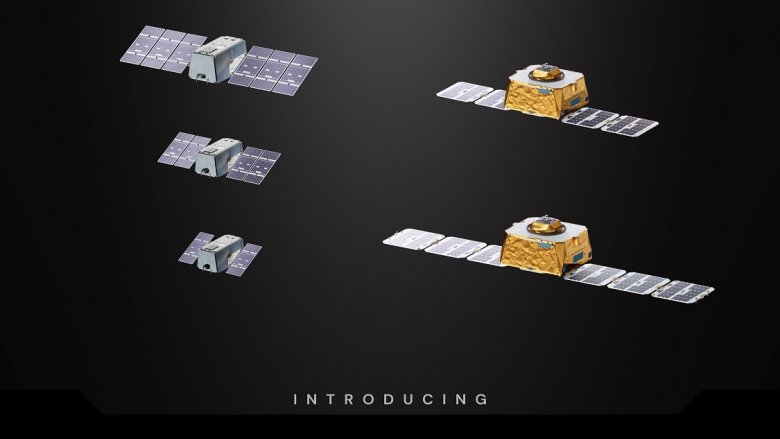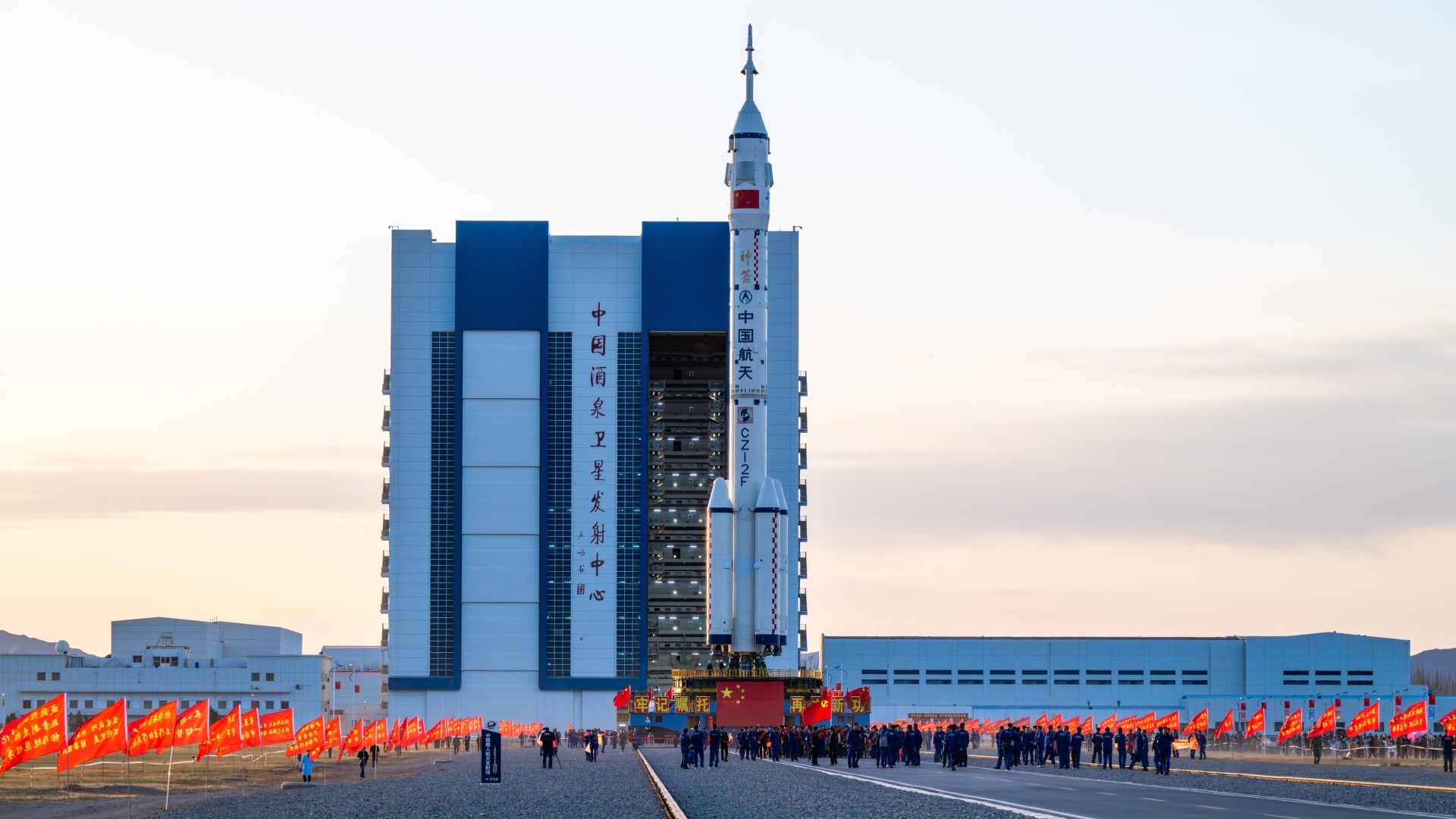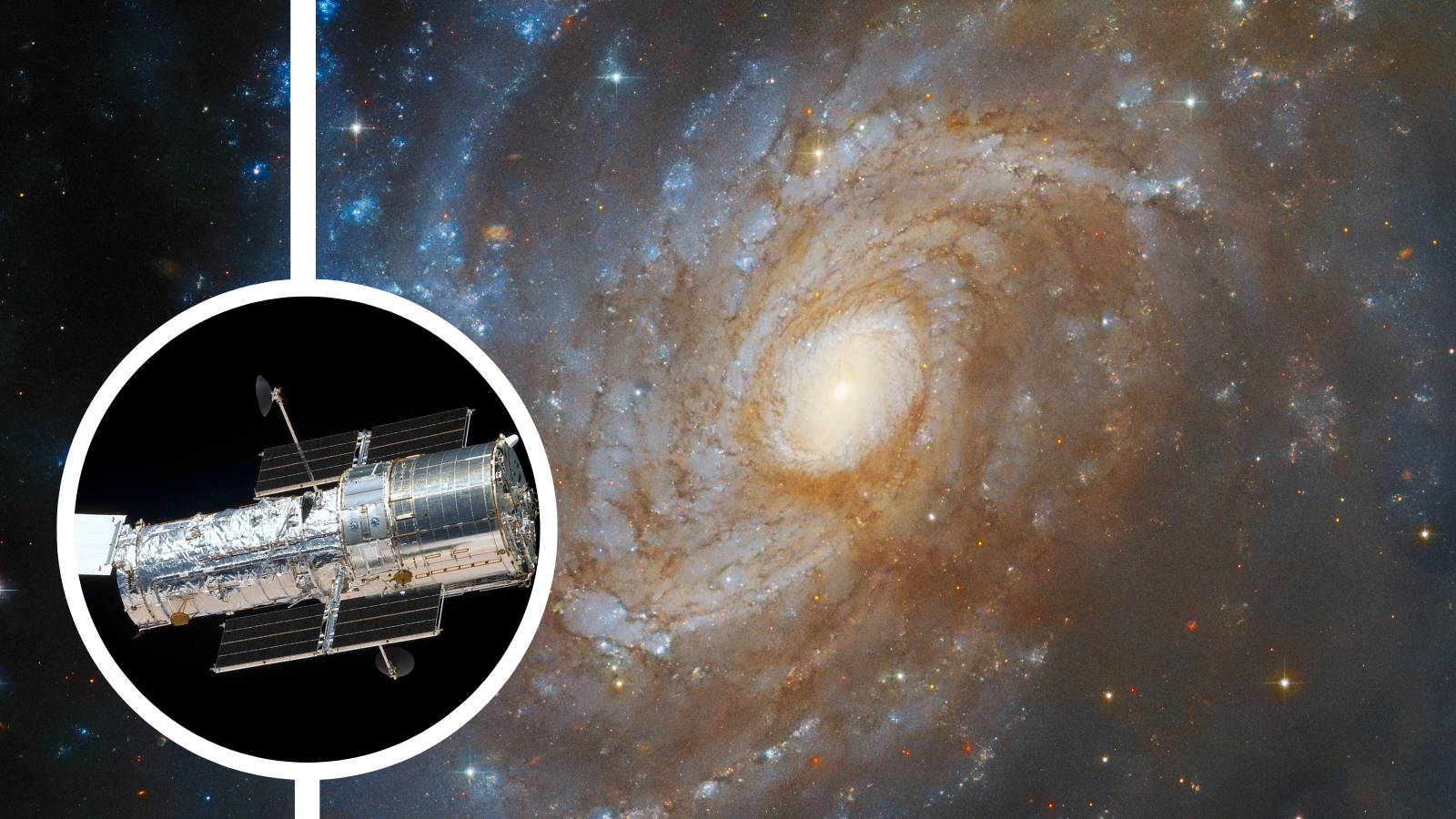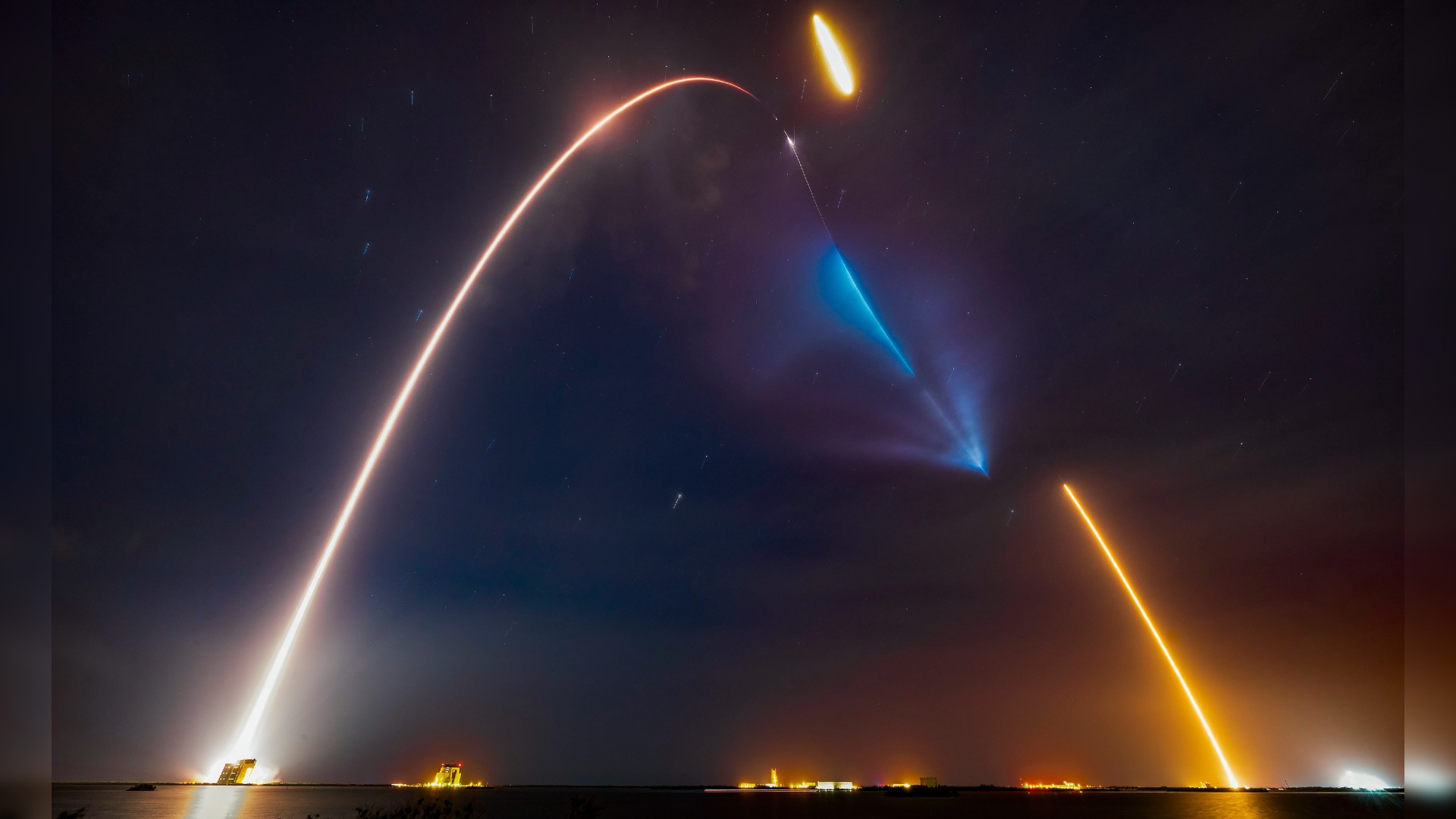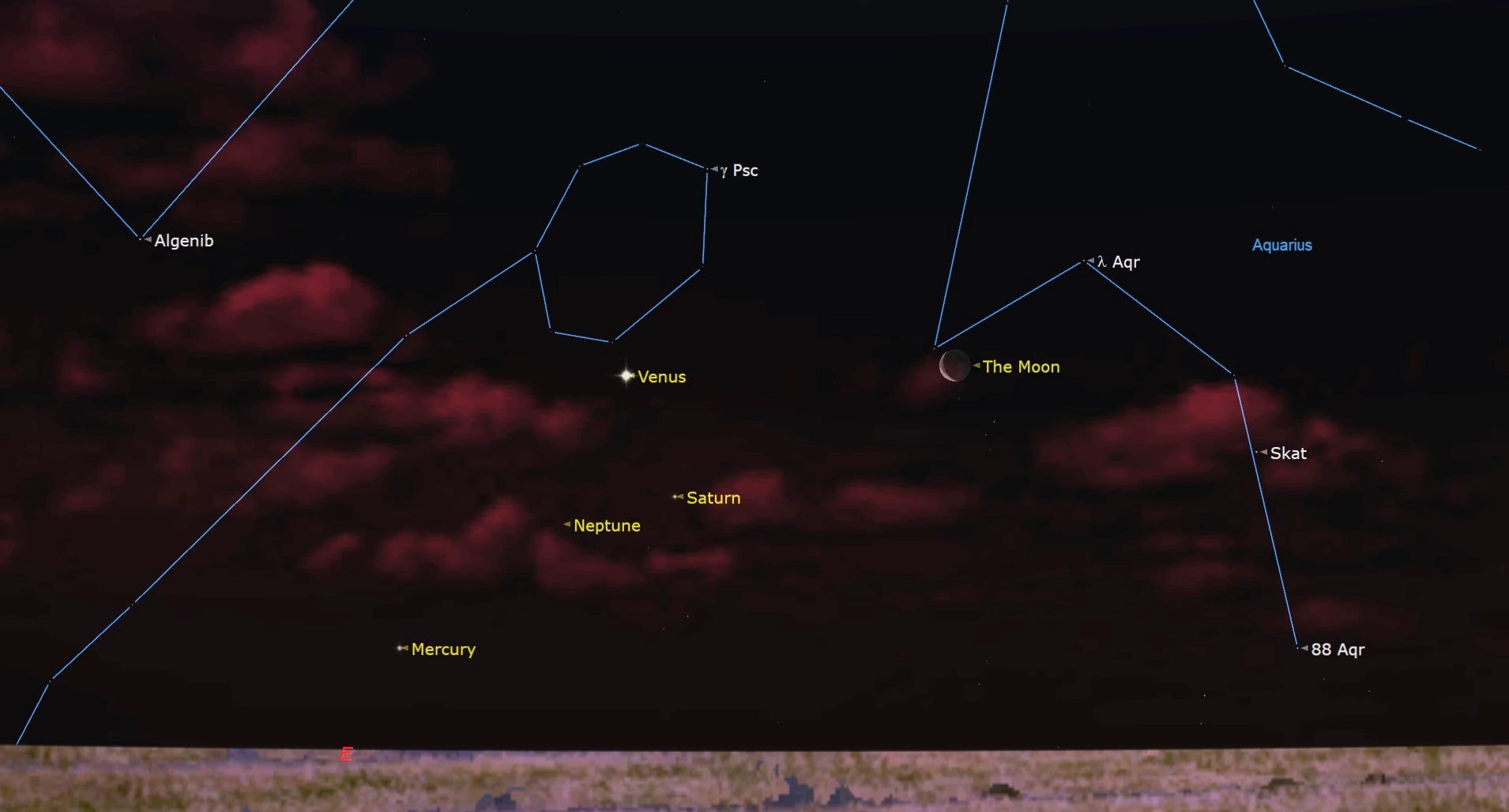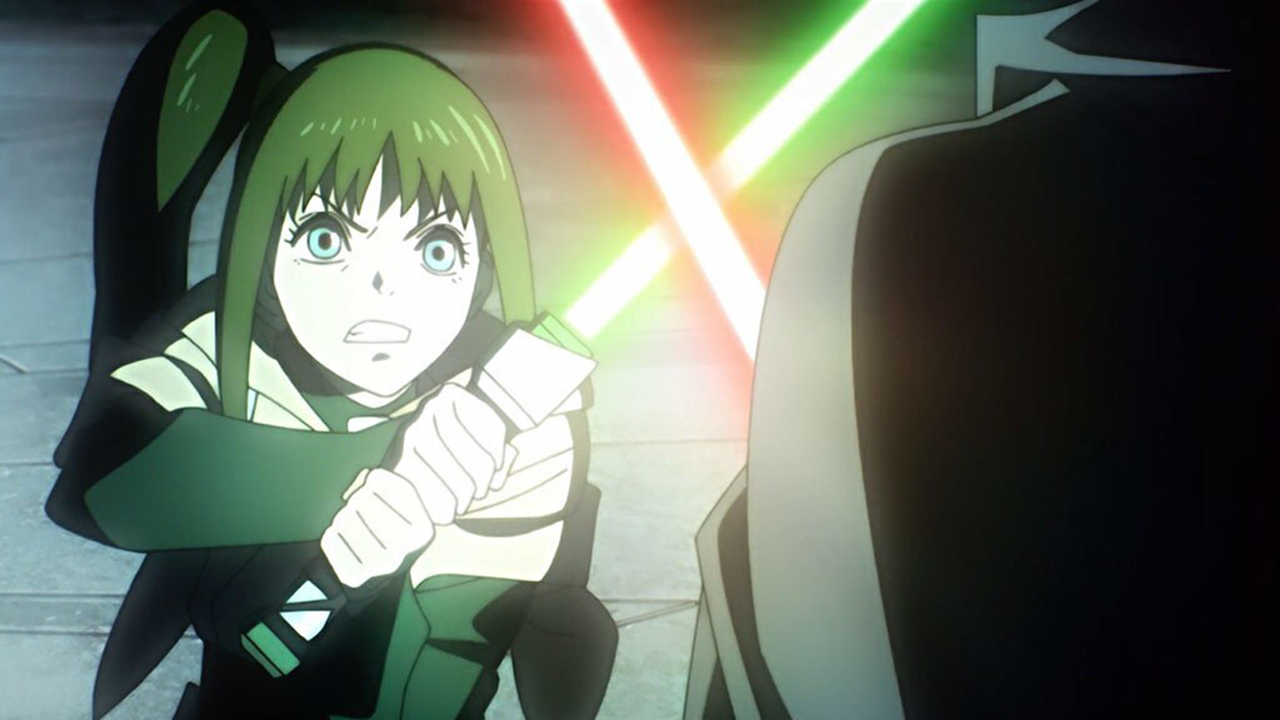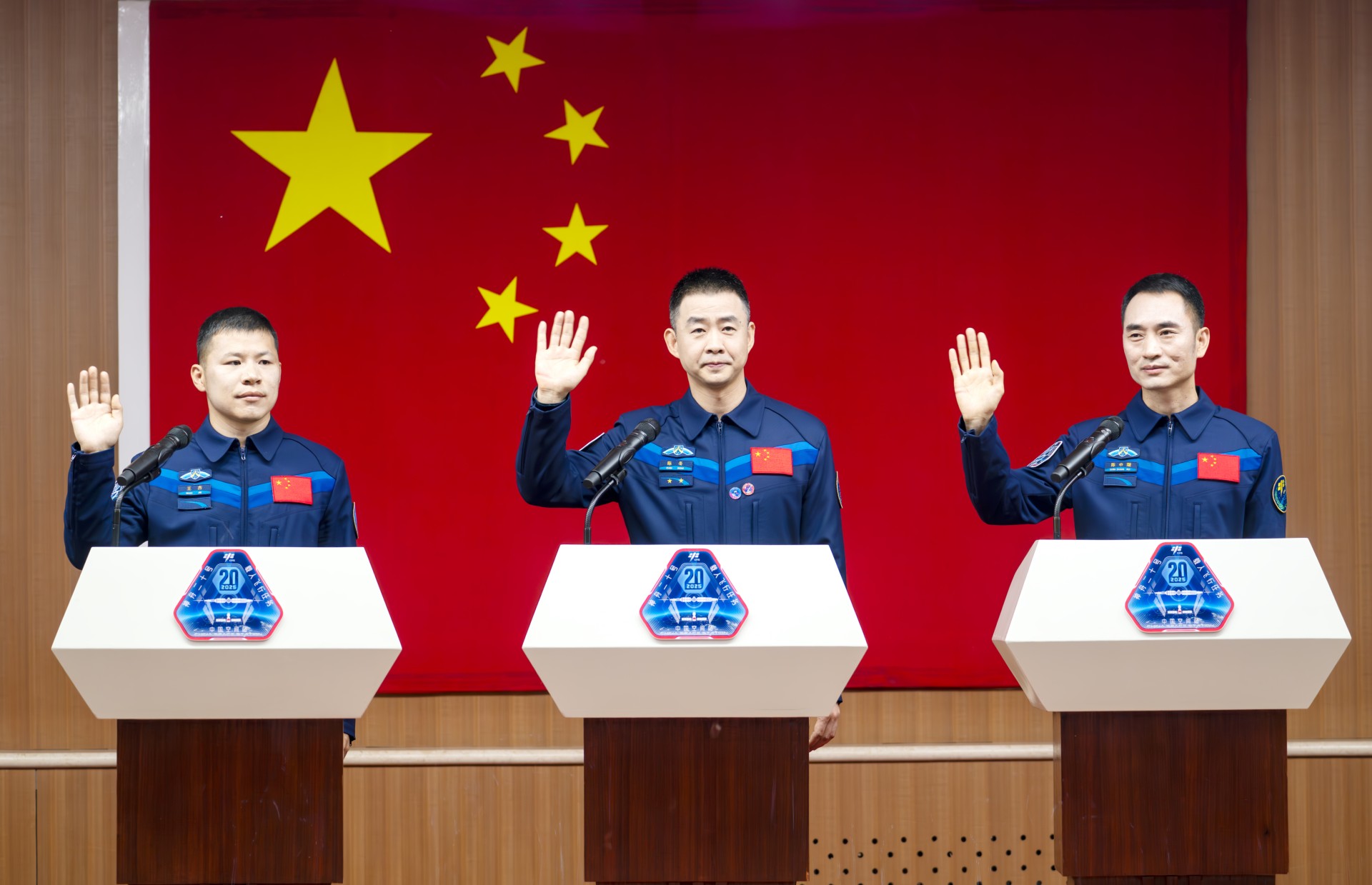'Star Trek: Voyager' at 30: Why it was the right show at the wrong time
The fourth live-action "Star Trek" TV show made some mistakes along the way, but it was arguably held back by the time it was made
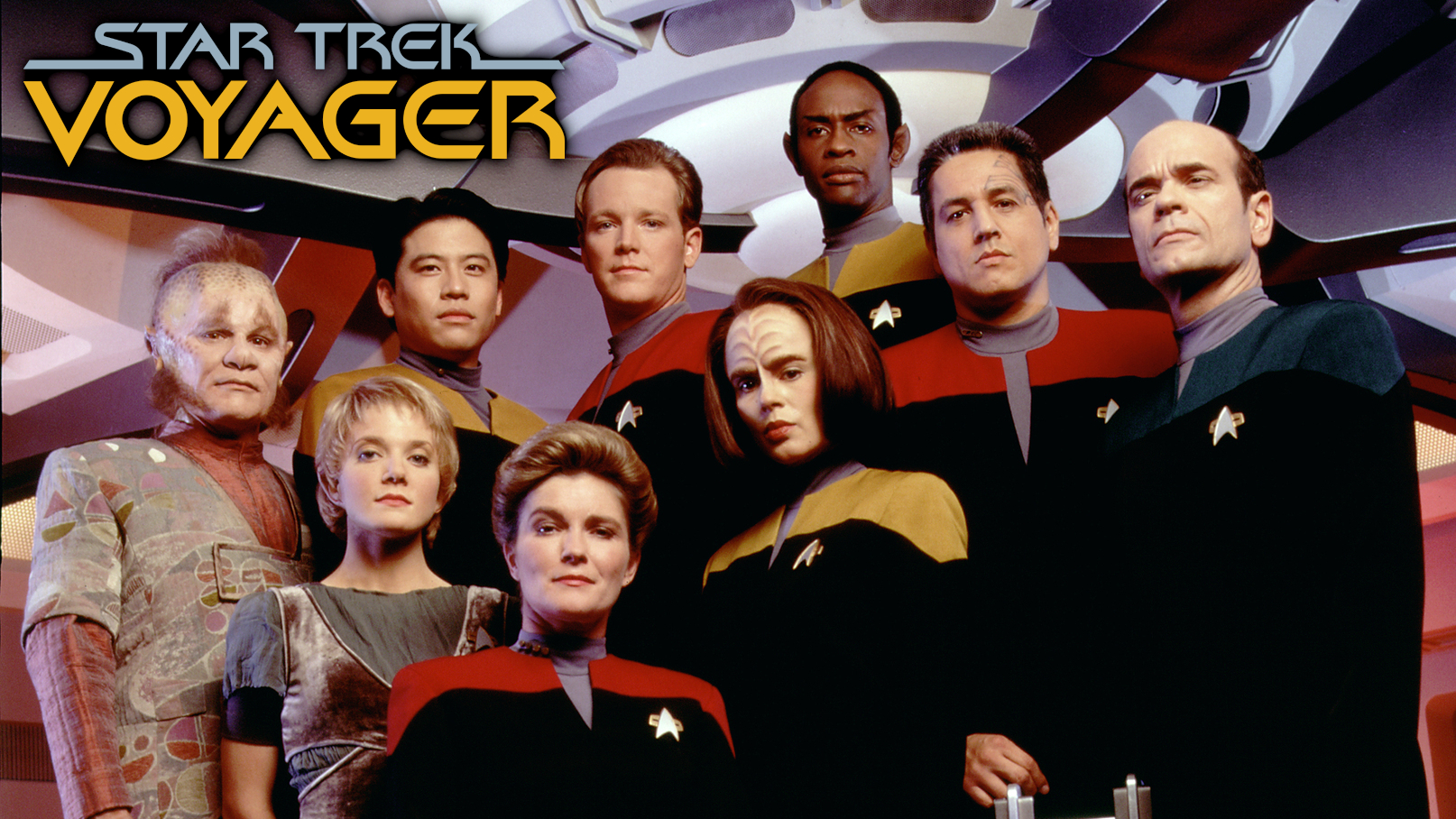
After seven years making it so on the small screen, the Next Generation crew graduated to full-on movie star status with 1994's "Star Trek: Generations". But as Jean-Luc and co got busy meeting Starfleet royalty (hello, James T Kirk) and smashing the Enterprise into the surface of Veridian III, Paramount had decided they needed a flagship for their new United Paramount Network (UPN). Voyager was the vessel assigned to carry the franchise into a new frontier. It left Spacedock for the first time on January 16, 1995.
Although space station-set stablemate "Deep Space Nine" was carving out a new niche with its increasingly complex story arc, the new show would mark a return to the starship-based spirit of exploration that characterized the original "Star Trek". Even so, co-creators Rick Berman (the longtime steward of the franchise), Michael Piller, and Jeri Taylor knew they couldn't simply churn out a "TNG" clone.
Item one on the agenda was being the first "Trek" to put a woman in the captain's chair — Kate Mulgrew would go on to play Kathryn Janeway through seven seasons and beyond. It was also decided that the new show would make Kirk and Spock's original five-year mission look like a walk in the park, by marooning the Voyager crew on the other side of the galaxy, roughly 75 years from home. And they'd inject some tension into the traditionally utopian environment of a Starfleet bridge by forcing the crew to cohabit with a group of terrorists.
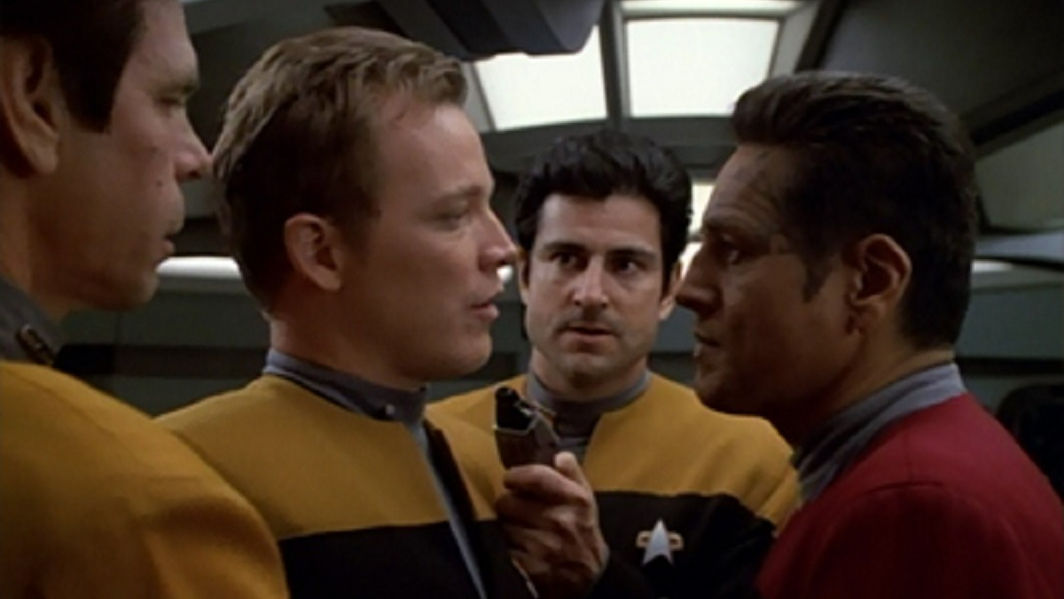
It was such a brilliant premise that it should have put an exciting new spin on "Star Trek"'s decades-old mission to explore strange new worlds. As it turned out, however, the gravitational pull of familiar "Trek" tropes proved too great, and within a few short weeks, the show's faraway location and thrown-together crew would feel like afterthoughts. In hindsight, the world — and "Star Trek" as a whole — may not have been ready for what "Voyager" originally set out to do.
Although they were excited about creating a new "Trek", neither Berman nor fellow executive producer Piller were convinced they needed to launch another show so soon after "TNG"'s final voyage. "Rick really felt that 'Deep Space Nine' deserved an opportunity to be on the air by itself and that the franchise could use a little breathing room," Piller said in "The Fifty-Year Mission" by Mark A Altman and Edward Gross. "He wanted the studio to hold off on 'Voyager' for a year at least. The studio came back and more or less said, 'Well, Rick, we're going to do this with or without you. We'd rather do it with you, but…" Berman ultimately said yes.
Pilot episode "Caretaker" saw Janeway leading the crew of the state-of-the-art USS Voyager into the Badlands in pursuit of a fugitive Maquis ship — the aforementioned anti-Cardassian paramilitaries had already been introduced in "DS9" and "TNG". Both ships were pulled to the distant Delta Quadrant by an ancient alien Caretaker, but ultimately ended up trapped in unknown space when Janeway opted to destroy their one route home, in order to protect the Ocampa under the Caretaker's protection.
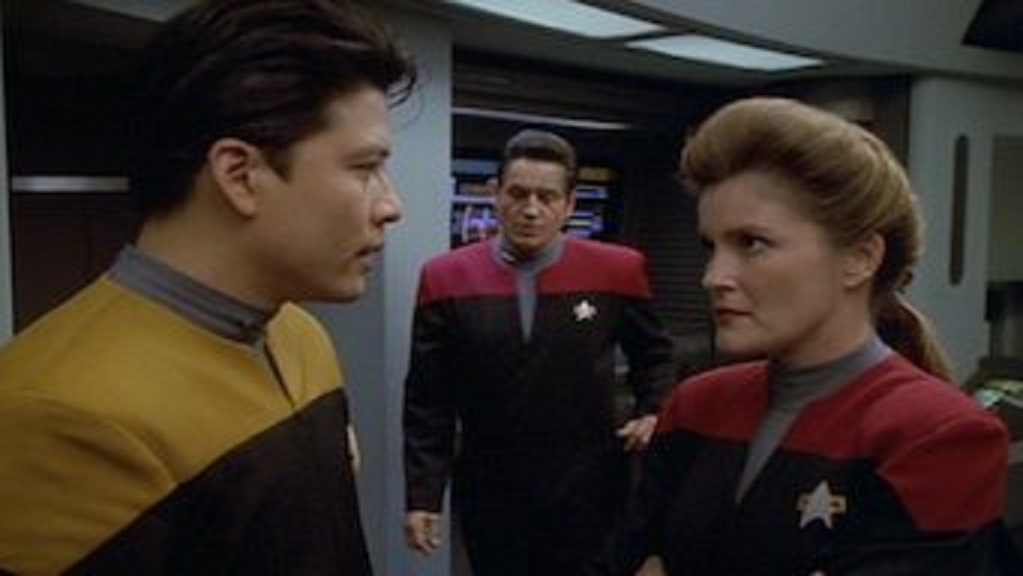
The good — some might say convenient — news for the castaways was that the Delta Quadrant looked rather like the Alpha Quadrant they called home. There was a familiar feel to the planets and, despite having no experience of this region of the galaxy, the ubiquitous Universal Translator ensured that communicating with new civilizations was mostly a doddle. Futuristic power sources — god bless you, dilithium — and replicators also meant that supplies were rarely a problem, though Janeway did ration replicator usage to save energy for the warp drive.
Get the Space.com Newsletter
Breaking space news, the latest updates on rocket launches, skywatching events and more!
And then there were the overly familiar aliens Voyager routinely encountered. The Ferengi had been earmarked as "The Next Generation"'s Big Bads, until the production team realised they weren't particularly threatening. Weirdly, "Voyager" made exactly the same mistake with the Kazon — tired Klingon wannabes who were rarely a match for Starfleet smarts — and came up with exactly the same solution to their problem: the Borg. Sadly, by the time the Collective became "Voyager" regulars, their best days were long behind them, and a little ship light years from home proved remarkably adept at defeating Picard's nemesis. Again. And again. And again.
The show's biggest misstep, however, was its rapid abandonment of the tantalizing Federation/Maquis dynamic. It had been conceived as an ingenious solution to an age-old problem of the final frontier: how do you introduce conflict to a Starfleet vessel without breaking "Trek" creator Gene Roddenberry's rules forbidding conflict between officers?
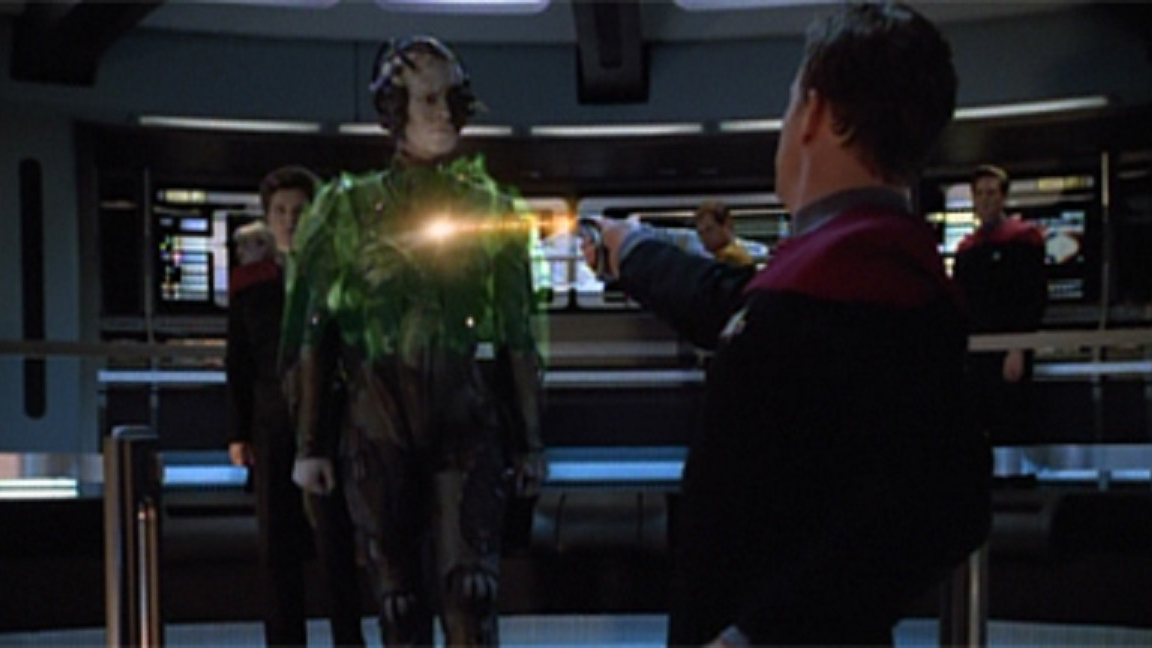
There was always a degree of pragmatism and necessity in Janeway's decision to bring the two crews together — the Maquis ship had been destroyed, and she'd lost some important officers — but the speed of the integration never rang true. Within weeks, they were operating as one, happy-ish Starfleet family, with Seska the only significant fly in the ointment, and she was an undercover Cardassian spy.
It's clear now that many of these less-than-optimal elements were born of the time the show was made. Standalone, syndication-friendly episodes were very much the norm in the '90s, budgets rarely allowed for movie-level prosthetics or CG, and "Star Trek" was in the midst of a remarkable unbroken 18-year run on TV that spawned more 500 episodes — is it any wonder that the writers occasionally repeated themselves?
Nonetheless, it's tempting to imagine how "Voyager" might have looked had it arrived a decade or so later, after "Battlestar Galactica" had changed the rules of engagement for space-set sci-fi. In an era where complex serialized storytelling has become the norm — and even Picard and Riker can have stand-up arguments on the bridge — it's easy to picture a scenario where Starfleet and the Maquis take several seasons to reconcile their differences. Along the way, they'd probably have prolonged stand-offs over water supply, or spend weeks on end working out how to communicate with a new alien race.
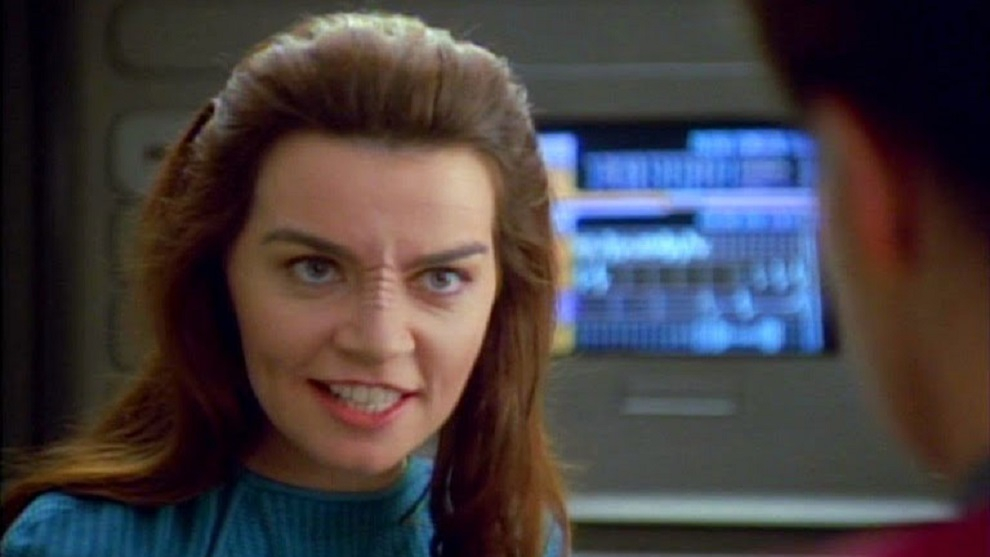
And for all its undoubted shortcomings, "Voyager" got so much right. It produced a few truly memorable villains (most notably the Phage-afflicted, surgery-obsessed Vidiians), while stories like the timeline-altering "Year of Hell" rank among the greatest in "Trek" history. The growing affection for the show is clear in both fandom and subsequent TV shows (both "Picard" and "Lower Decks" have featured callbacks aplenty), while this writer has a picture of the elegant USS Voyager on his office wall.
And then there's Captain Kathryn Janeway, whose emotional intelligence, calmness under pressure and seemingly effortless management style have seen her reputation grow to the point she's widely regarded as one of the greatest "Star Trek" captains of all time. Indeed, of all TV's past commanding officers, she was the one chosen to mentor the rookies in "Star Trek: Prodigy" — it's hard to imagine anyone else doing the job quite so well.
Every episode of "Star Trek: Voyager" is available on Paramount+ in the US and the UK. UK viewers can also stream the show on Netflix.
Join our Space Forums to keep talking space on the latest missions, night sky and more! And if you have a news tip, correction or comment, let us know at: community@space.com.
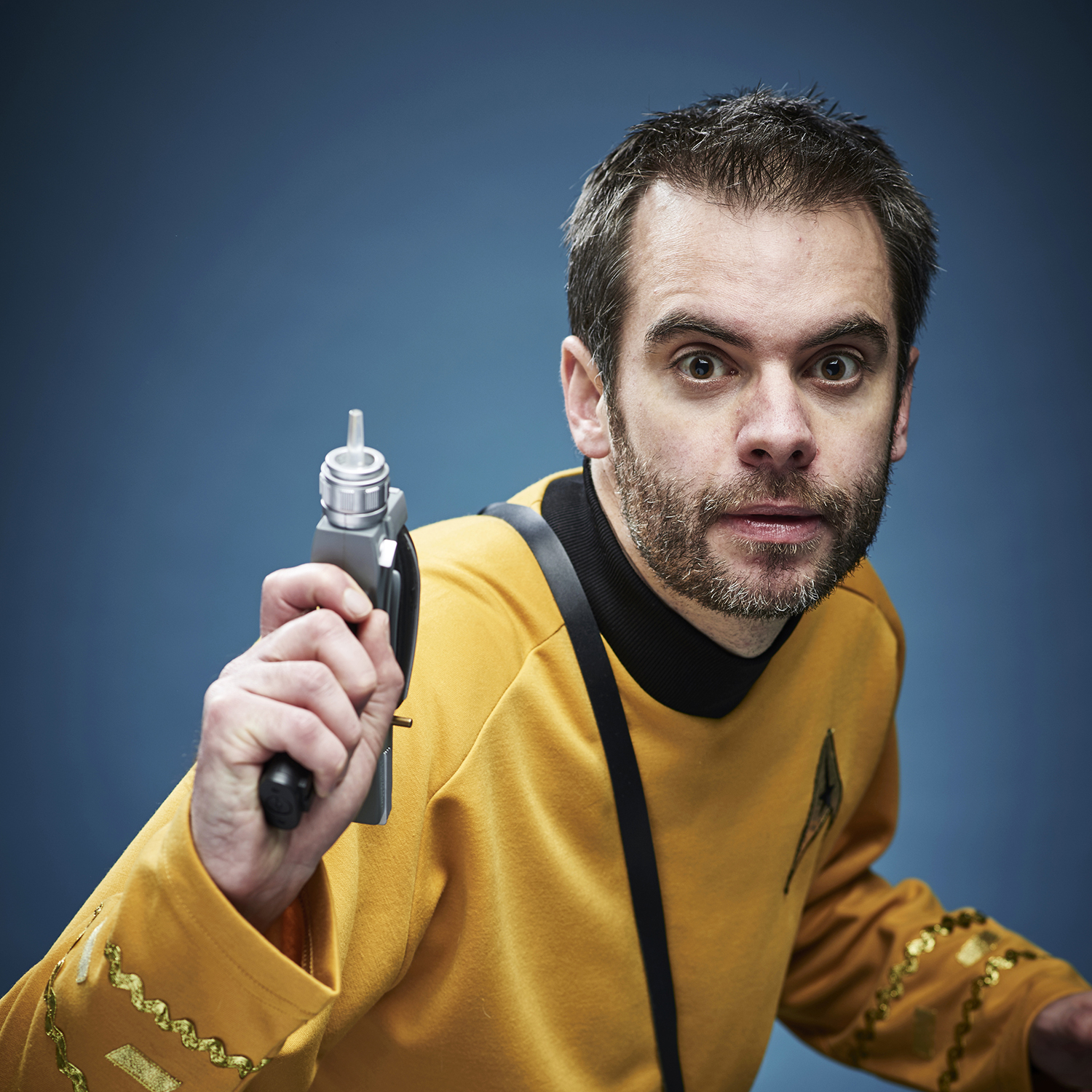
Richard's love affair with outer space started when he saw the original "Star Wars" on TV aged four, and he spent much of the ’90s watching "Star Trek”, "Babylon 5” and “The X-Files" with his mum. After studying physics at university, he became a journalist, swapped science fact for science fiction, and hit the jackpot when he joined the team at SFX, the UK's biggest sci-fi and fantasy magazine. He liked it so much he stayed there for 12 years, four of them as editor.
He's since gone freelance and passes his time writing about "Star Wars", "Star Trek" and superheroes for the likes of SFX, Total Film, TechRadar and GamesRadar+. He has met five Doctors, two Starfleet captains and one Luke Skywalker, and once sat in the cockpit of "Red Dwarf"'s Starbug.
-
Airlinepilot717 How can an article about Voyager not mention Seven-of-Nine?Reply
The show was dying and then Gene Roddenbury called from Star Trek heaven and said " Great show, now where is my hot girl to keep me coming back?"
After that, they cast Jeri Ryan in a catsuit, and the show's ratings soared. -
Smittens Reply
The Doctor deserves a mention too.Airlinepilot717 said:How can an article about Voyager not mention Seven-of-Nine?
The show was dying and then Gene Roddenbury called from Star Trek heaven and said " Great show, now where is my hot girl to keep me coming back?"
After that, they cast Jeri Ryan in a catsuit, and the show's ratings soared.
The ratings soared for a few months with Seven - year to year increases, which is a big deal. Then they were back to normal. She surely provided a sustained boost to ratings retention they otherwise wouldn’t have had - definitely gave them constant publicity fodder and good critical notices. But by season 5 Voyager was no longer UPN’s number one show and that’s more to do with erosion than it is the popularity of wrestling. -
AboveAndBeyond Well, you know the joke about Janeway... they hand the keys to the starship to a woman, and the first thing she does is make a wrong turn and gets them lost in the Delta Quadrant.Reply
I second the Doctor deserving a mention, along with Kes. I could have done without Neelix, or Paris, really. And I was no fan when Seven of Nine came along.
The best episode was the two-parter where they time travel back to Earth circa the 1990's and get wrapped up with Sarah Silverman (an astronomer at Griffith's Observatory who spots the starship in orbit) and Ed Begley, Jr. -- "Futures End" (Season 3).
There were quite a few other memorable episodes, and Species 8472 deserves mention as being other than your usual bad guys. -
Spuwho Actually the show was way ahead of it's time because one of the creators was also its show runner, Jeri Taylor.Reply
But this caused the one big story issue with the writing. Too many of the plots were about how only women could solve the issues and the men were only contributors, exactly a flip-flop of prior Trek.
This made it unattractive to a key demographic, young men. But it attracted women, daughters and grand-daughters, who would gather around the TV together like the next episode of Bold and the Beautiful. And why wouldn't they? It showed women in roles of authority, leadership, technical knowledge, and in blended families.
But the ratings were terrible, 18-34 men weren't watching. Out with Jeri Taylor, in with Michael Piller. Out with the weaker female role, in with a knockout female role.
It worked, the male 18-34 demographic came back and the show reversed its trajectory. The episode plot depth got deeper and richer and yes, it embraced the "tropes", which seems to be a popular term now in reviewing anything Star Trek.
I knew Voyager had made an impact in the Trek fabric when Janeway had a brief cameo with Picard in a TNG movie and the audience cheered and clapped.
Pillers use of the Nine character directly led to the creation of T'pol in Enterprise by Brandon Braga.
Jeri Ryan will always be associated with her role as Nine, just as Bill Shatner will always be Kirk.
